Related Research Articles

The Romney, Hythe and Dymchurch Railway (RH&DR) is a 15 in gauge light railway in Kent, England, operating steam and internal combustion locomotives. The 13+1⁄2-mile (21.7 km) line runs from the Cinque Port of Hythe via Dymchurch, St. Mary's Bay, New Romney and Romney Sands to Dungeness, close to Dungeness nuclear power station and Dungeness Lighthouse.

Romney Marsh is a sparsely populated wetland area in the counties of Kent and East Sussex in the south-east of England. It covers about 100 square miles (260 km2). The Marsh has been in use for centuries, though its inhabitants commonly suffered from malaria until the 18th century. Due to its location, geography and isolation, it was a smuggler's paradise between the 1600s and 1800s. The area has long been used for sheep pasture: Romney Marsh sheep are considered one of the most successful and important sheep breeds. Criss-crossed with numerous waterways, and with some areas lying below sea level, the Marsh has over time sustained a gradual level of reclamation, both through natural causes and by human intervention.
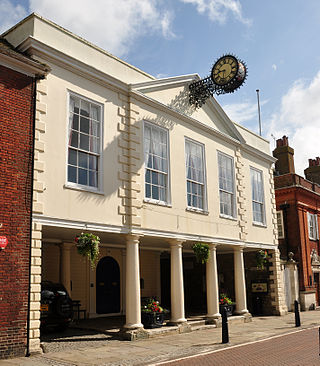
Hythe is a coastal market town on the edge of Romney Marsh, in the district of Folkestone and Hythe on the south coast of Kent. The word Hythe or Hithe is an Old English word meaning haven or landing place.

New Romney is a market town in Kent, England, on the edge of Romney Marsh, an area of flat, rich agricultural land reclaimed from the sea after the harbour began to silt up. New Romney, one of the original Cinque Ports, was once a sea port, with the harbour adjacent to the church, but is now more than a mile from the sea. A mooring ring can still be seen in front of the church. It is the headquarters of the Romney, Hythe and Dymchurch Railway.

Dymchurch is a village and civil parish in the Folkestone and Hythe district of Kent, England. The village is located on the coast five miles (8 km) south-west of Hythe, and on the Romney Marsh.
Pilton Yard, in Barnstaple was, between 1898 and 1935, the main depot and operating centre of the Lynton and Barnstaple Railway ('L&B'), a narrow gauge line that ran through Exmoor from Barnstaple to Lynton and Lynmouth in north Devon, England. Pilton station was served by regular passenger services advertised between 1898 and 1904 after which only goods facilities were provided. Passengers were catered for at the nearby LSWR station, Barnstaple Town, which provided connections with trains on the standard gauge branch line to Ilfracombe. The L&B's main offices were also based at Pilton, in a building formerly belonging to the Tannery which had earlier occupied the site, and which took over the site after the railway closed.
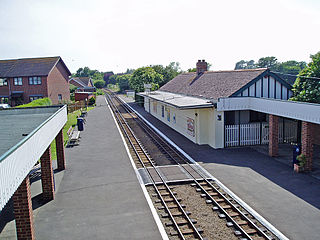
Dymchurch railway station is on the Romney, Hythe and Dymchurch Railway in Kent, England. It is five miles south of Hythe, and surrounded by flat countryside.
Hythe railway station may refer to the following railway stations in England:

TMA Engineering Ltd, is an engineering business based in Erdington, West Midlands, who supply services around power presses, but are best known for their sideline in building and overhauling miniature steam locomotives.
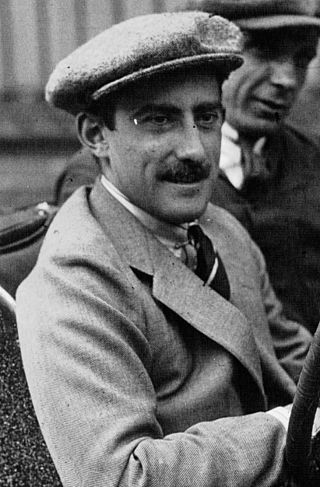
Louis Vorow Zborowski was an English racing driver and automobile engineer, best known for creating a series of aero-engined racing cars known as the "Chitty-Bang-Bangs", which provided the inspiration for Ian Fleming's children's story, Chitty Chitty Bang Bang and culminated in the "Higham Special" which, much modified in the hands of John Godfrey Parry Thomas, broke the World Land Speed Record 18 months after the death of its creator.

Romney Sands Railway Station is a station on the Romney, Hythe and Dymchurch Railway in Kent, England. It is located on the bleakest part of the Romney Marsh, a shingle peninsula.
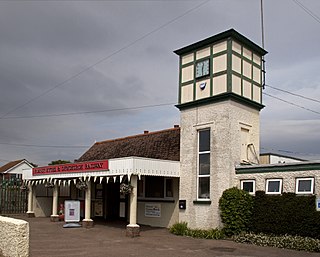
New Romney railway station is a station on the Romney, Hythe and Dymchurch Railway in New Romney, Kent, England. It has always been the headquarters location of the railway.
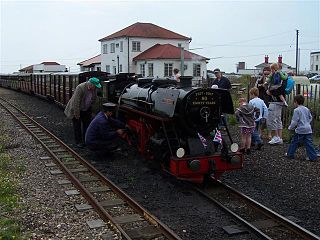
Dungeness railway station is a station on the Romney, Hythe and Dymchurch Railway on Romney Marsh in Kent.

The Pilot Inn railway station was a station on the Romney, Hythe and Dymchurch Railway in Kent, England.

The War Department halt was an informal railway station on the Romney, Hythe and Dymchurch Railway in Kent, England. Over the 15 years that the station was open, its location is believed to have moved several times. Details are scarce as this was a secret military installation, but the end of the War Department branch line moved as building work moved onto new stages. When the installation closed in 1945 the railway company took over the line for freight shipment of ballast. Again, the end point of the line changed several times as the exact location of extraction of ballast changed, until closure of the branch in 1951. The locations of the halt are now under water owing to subsequent commercial extractions and flooding of the ballast pits.
Henry Greenly (1876–1947) was amongst the foremost miniature railway engineers of the 20th century, remembered as a master of engineering design.
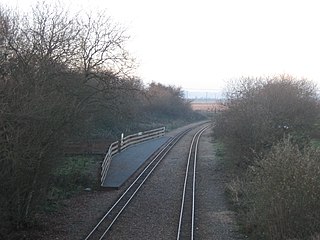
Romney Warren Halt railway station is a station on the Romney, Hythe and Dymchurch Railway in Kent, England. It has also been known as Warren Halt and Warren Bridge Halt.

The Shuzenji Romney Railway is a 1.2 km, 15 in gauge ridable miniature railway located in Niji-no-Sato in Izu, Shizuoka, on the Izu Peninsula in Japan. It is based on the English Romney, Hythe & Dymchurch Railway on the English Channel coast in Kent, which opened in 1927. The railway operates using a mixture of steam and diesel locomotives and enclosed saloon carriages. Its primary two steam engines were built by the Ravenglass and Eskdale Railway in Cumbria, England, and are based on that line's 1976 Northern Rock 2-6-2 steam locomotive. Its No. 2 locomotive Ernest W. Twining was acquired from the Fairbourne Railway in Wales when that line converted to 12+1⁄4 in gauge. There is also a small 15-inch gauge railway museum.

This article gives details of the locomotives used on the Ravenglass and Eskdale Railway, a 15 in narrow gauge preserved railway line running for 7 miles (11 km) from Ravenglass on the Cumbrian coast to Dalegarth near the village of Boot, in Eskdale.
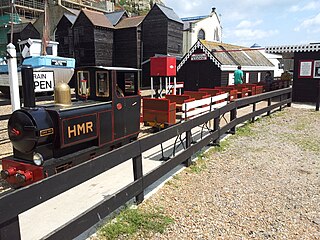
The Hastings Miniature Railway is a 10+1⁄4 in gauge miniature railway located on the seafront at Hastings, a seaside resort, town, and ancient cinque port, in East Sussex, England. Opened in 1948, it remains a popular tourist attraction. The line was re-opened in the summer of 2011 after a period of reconstruction and restoration, which coincided with a forced closure of the eastern part of the line, to facilitate building work on a new art gallery adjacent to the railway.
References
- ↑ Snell, J.B. (1993) [1983]. One Man's Railway. revised by David St John Thomas (revised ed.). David & Charles. p. 107, and photograph page 87. ISBN 0-946537-80-1.
- ↑ "Locomotives: No. 4 The Bug". Romney, Hythe & Dymchurch Railway.
